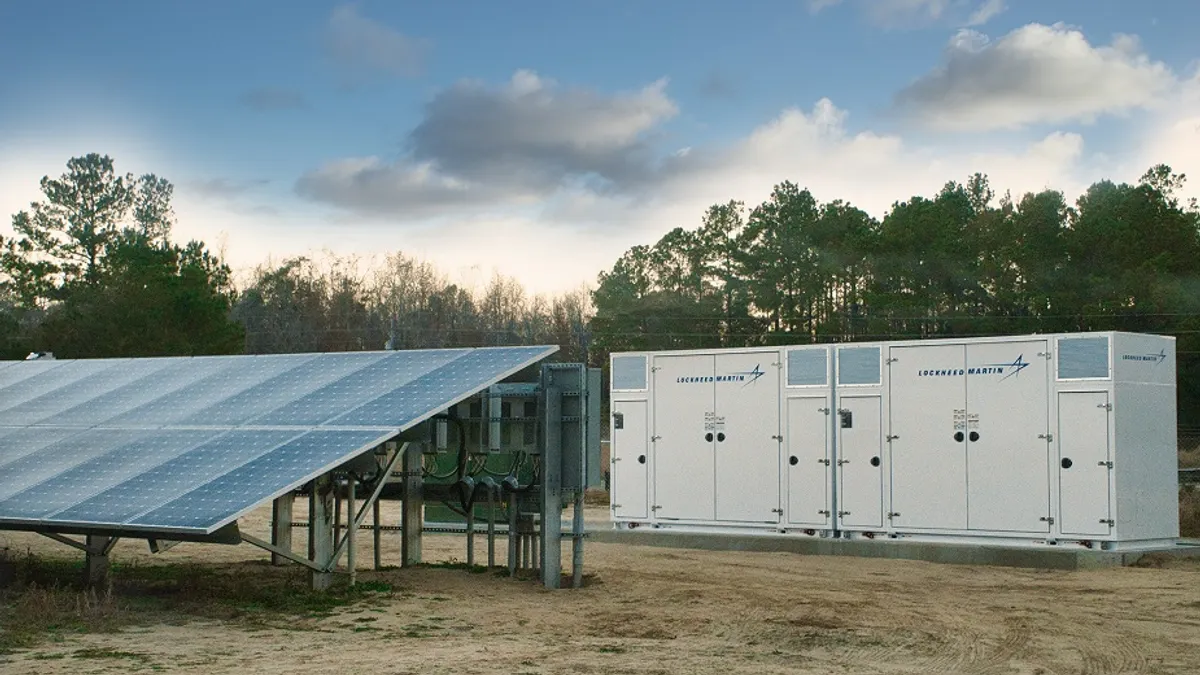Dive Brief:
- Global infrastructure firm AECOM says it has begun construction on an energy storage system at Fort Carson, Colo., that will utilize a 4.25 MW/8.5 MWh lithium-ion battery developed by Lockheed Martin to help reduce energy costs and improve resilience at the base.
- Once completed, the Battery Energy Storage System (BESS) will be the largest stand-alone commercially contracted battery at an army base, according to the developers. The behind-the-meter system work to reduce peak electricity demand.
- The U.S. military is still dependent on petroleum, but is expected to accelerate its investments in clean energy and grid security over the next decade. Navigant expects the military's annual spending on microgrids to rise from $453 million in 2017 to $1.4 billion in 2026.
Dive Insight:
The U.S. military, like corporate America and a swath of states, is increasingly turning to grid edge technology to help reduce energy costs and maintain resilience. Like most energy consumers, bases are looking to cut peak demand and integrate additional renewables into their mix.
According to AECOM, the currrent primary-use case for the BESS is demand charge reduction, but the battery system may take on other tasks, including optimization of Fort Carson's photovoltaic assets, frequency and voltage support for Fort Carson's distribution grid and, potentially, microgrid support.
AECOM Senior Vice President Annika Moman said in a statement the company went with Lockheed Martin's GridStar system due to their "unique modular architecture allowing for a flexible design and a reduction in operational risk."
The military's interest in clean energy technology has been growing. Last year, Go Electric won a $1.7 million contract from Perini Management Services to provide a 1 MW, 1 MWh battery storage system to a U.S. Army depot in Tooele, Utah.
According to Navigant, microgrids could help DOD reduce the $4 billion it spends on energy across its 523 installations and 280,000 buildings. The firm's 2017 report concluded shifting from a reliance on backup diesel generators to large-scale microgrids could save the agency between $8 billion and $20 billion over the next 20 years.















